#makar sankranti decoration
Text
Best Makar Sankranti Decoration Ideas for Home 2024
#home decor items#decorative items#makar sankranti#arcediorshop#arcedior#home decor#home decoration#makar sankranti decoration#makar sankranti home decor#pongal home decor
1 note
·
View note
Text
Celebrating Makar Sankranti 2024: Kites, Colors, and Cheer
Celebrate Makar Sankranti 2024 in style! Come experience a colorful spectacle of kites, colors, and joy as we explore the rich customs and joyous atmosphere. Learn about the significance of this auspicious day and take part in the joyful celebrations. Take advantage of the best Makar Sankranti experience possible.
0 notes
Text
Celebrating Makar Sankranti 2024: Kites, Colors, and Cheer
Get ready for a sensational Makar Sankranti celebration in 2024 with "Celebrating Makar Sankranti 2024: Kites, Colors, and Cheer" by Sabezy. Explore the vibrant traditions, thrilling kite flying, and joyful festivities that await you this festive season. Join us for an unforgettable experience!
0 notes
Text
Celebrate the joyous celebration of Makar Sankranti 2024, which is filled with kites and colors! This Makar Sankranti uplifts your festive vibes by exploring fresh ideas for home decor.
0 notes
Text
CELEBRATING MAKAR SANKRANTI 2024: KITES, COLORS, AND CHEER
Celebrating Makar Sankranti 2024 with vibrant kites, joyful colors, and heartwarming cheer. Embrace the traditional significance of Pongal, explore thoughtful gift hampers, and discover new home decor ideas to infuse your celebrations with auspicious beginnings and festive spirit.
0 notes
Text
The Best Time to Visit Udaipur and Where to Stay
Udaipur, often referred to as the "City of Lakes," is a mesmerizing destination nestled in the heart of Rajasthan, India. Known for its rich history, stunning architecture, and serene lakes, Udaipur offers a unique blend of cultural heritage and natural beauty. If you're planning a trip to this enchanting city, timing your visit right and choosing the perfect place to stay can make all the difference.
The Best Time to Visit Udaipur
October to March: The Ideal Season
The period between October and March is undoubtedly the best time to visit Udaipur. During these months, the weather is pleasant and comfortable, making it ideal for sightseeing and outdoor activities. The temperatures range from 10°C to 25°C (50°F to 77°F), providing a refreshing respite from the scorching summer heat.
Highlights of Visiting in Winter:
Pleasant Weather: The cool and crisp air makes exploring the city's palaces, temples, and lakes an enjoyable experience.
Festivals: This season coincides with several vibrant festivals like Diwali, Makar Sankranti, and Holi, offering a glimpse into the local culture and traditions.
Wildlife: It's a great time for wildlife enthusiasts to visit the nearby Kumbhalgarh Wildlife Sanctuary.
Monsoon: July to September
Udaipur transforms into a lush green paradise during the monsoon season. Though the rainfall can be unpredictable, the city's lakes and gardens come alive, offering a different kind of charm. The temperatures during this period range from 25°C to 35°C (77°F to 95°F).
Highlights of Visiting in Monsoon:
Greenery: The Aravalli hills surrounding Udaipur become verdant and picturesque.
Lake Views: The lakes are full, providing stunning views and opportunities for boat rides.
Less Crowded: Fewer tourists mean you can enjoy the city's attractions at a leisurely pace.
Summer: April to June
Summer in Udaipur can be quite hot, with temperatures soaring between 30°C to 45°C (86°F to 113°F). While not the most popular time to visit due to the heat, there are still benefits for those who choose to brave the weather.
Highlights of Visiting in Summer:
Budget-Friendly: Hotels and flights are often cheaper during this period.
Cultural Immersion: Experience the local life without the tourist rush.
Indoor Attractions: Explore Udaipur's museums, art galleries, and palaces, which remain cool and inviting.
Where to Stay: Karni Mahal Homestay
Choosing the right accommodation is crucial for a memorable stay in Udaipur, and Karni Mahal Homestay offers an exceptional experience that blends comfort with authenticity.
About Karni Mahal Homestay
Located in a serene neighborhood, Karni Mahal Homestay is a charming heritage property that provides a perfect retreat for travelers. The homestay is known for its warm hospitality, traditional decor, and modern amenities.
Why Choose Karni Mahal Homestay?
Heritage Ambiance: The homestay is a beautifully restored heritage property that offers a glimpse into Rajasthan's rich cultural past.
Personalized Service: The hosts at Karni Mahal ensure personalized attention to every guest, making you feel like part of their family.
Comfortable Rooms: The rooms are spacious, well-appointed, and equipped with all modern amenities while retaining a traditional touch.
Local Cuisine: Enjoy home-cooked Rajasthani meals that are both delicious and authentic.
Convenient Location: Situated close to major attractions like City Palace, Lake Pichola, and Jagdish Temple, yet away from the hustle and bustle.
Amenities at Karni Mahal Homestay:
Free Wi-Fi
Air-conditioned rooms
Complimentary breakfast
Laundry service
Travel assistance
Beautiful garden and terrace areas
Guest Experiences
Guests who have stayed at Karni Mahal Homestay often highlight the exceptional hospitality and the unique experience of living in a heritage property. Many appreciate the detailed attention to decor and comfort, as well as the opportunity to interact with the local family, which adds a personal touch to their stay.
Booking Your Stay
Karni Mahal Homestay can be booked through various travel platforms and directly through their website. It's advisable to book in advance, especially during the peak tourist season (October to March), to ensure availability.
Whether you're marveling at the architectural wonders of the City Palace, taking a boat ride on Lake Pichola, or simply soaking in the vibrant local culture, Udaipur offers an unforgettable experience. And with the right timing and a stay at the delightful Karni Mahal Homestay, your trip is bound to be truly special. Happy travels!
0 notes
Text
Festivals in India during Winter Season
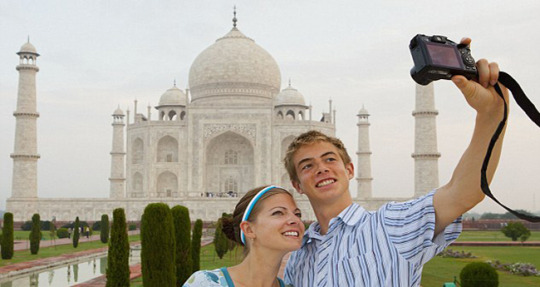
India, with its rich cultural tapestry, is a land of diverse festivals that celebrate the country's traditions, beliefs, and heritage. From October to March (winter season in India), a plethora of festivals unfolds, each marked by unique rituals, vibrant colors, and exuberant celebrations. Let's embark on a journey through the kaleidoscope of festivals that grace the Indian calendar during this period. A foreign tourist, planning a trip to India winter season, should try to go in for an itinerary that coincides with date of a festival and must include a destination accordingly. It will make your India tour a memorable journey. Attending festivals in India will introduce you with rich cultural heritage of India.
Navaratri (October): Navaratri, meaning "nine nights," is a Hindu festival dedicated to Goddess Durga. Celebrated in October, it signifies the triumph of good over evil. The first three nights are dedicated to Goddess Durga, the next three to Lakshmi, and the final three to Saraswati. The festival is marked by vibrant dance forms like Garba and Dandiya Raas, where people come together to revel in joyous camaraderie.
Durga Puja (October): Durga Puja, primarily celebrated in West Bengal, is an elaborate festival honoring Goddess Durga. The festival spans ten days, with the last four days being the most significant. Elaborate pandals (temporary structures) house intricately crafted idols of the goddess, and the city of Kolkata comes alive with cultural performances, processions, and artistic decorations.
Diwali (October/November): Diwali, the Festival of Lights, is one of the most widely celebrated festivals in India. Symbolizing the victory of light over darkness and good over evil, Diwali involves lighting oil lamps, bursting fireworks, and exchanging sweets. Homes are adorned with colorful rangolis, and families come together to worship Goddess Lakshmi, the goddess of wealth. You can opt for Ayodhya Diwali Tour.
Chhath Puja (October/November): Predominantly celebrated in the states of Bihar and Uttar Pradesh, Chhath Puja is dedicated to the Sun God. Devotees observe a strict regimen of fasting and rituals, including standing in water and offering prayers to the rising and setting sun. The festival is a unique blend of faith, discipline, and environmental reverence.
Guru Nanak Jayanti (November): Guru Nanak Jayanti commemorates the birth of Guru Nanak, the founder of Sikhism. Sikhs engage in prayers, processions, and langar (community meals) to honor the teachings of Guru Nanak. Gurdwaras are illuminated, and hymns resonate in the air, spreading a message of unity and equality.
Kartik Purnima (November): Celebrated on the full moon day in the month of Kartik, this festival holds significance in Hindu, Jain, and Sikh traditions. Devotees take ritualistic baths in holy rivers, and lamps are lit to honor various deities. In some regions, it marks the conclusion of the Kartik month with grand processions.
Pushkar Camel Fair (November): Held annually in the town of Pushkar, Rajasthan, the Pushkar Camel Fair is a unique blend of spirituality and vibrant festivities. Besides the trading of camels and livestock, the fair hosts cultural events, camel races, and folk performances. The town becomes a kaleidoscope of colors and traditions. You can opt for Pushkar Fair Tour and Rajasthan with Pushkar Fair Tour.
Christmas (December): Christmas, commemorating the birth of Jesus Christ, is celebrated with fervor across India. Churches are beautifully decorated, and people exchange gifts. Cities like Goa, known for their Christian population, host grand festivities, with midnight masses, carol singing, and delicious feasts.
Pongal / Makar Sankranti (January): Pongal, celebrated predominantly in Tamil Nadu, and Makar Sankranti, celebrated in various parts of India, mark the harvest festival. Homes are adorned with kolams (rangoli), and people prepare a special dish called Pongal. Kite flying is a common tradition during Makar Sankranti.
Republic Day (January 26): January 26th is a significant day in India as it marks the adoption of the Constitution. Republic Day celebrations include a grand parade in New Delhi, showcasing India's military might, cultural diversity, and technological achievements. The entire nation participates in patriotic fervor.
Vasant Panchami (February): Vasant Panchami heralds the arrival of spring and is dedicated to Goddess Saraswati, the patron of knowledge and arts. Schools and colleges organize special prayers, and people wear yellow attire, symbolizing the blossoming of mustard flowers. Basant Panchami is also associated with kite flying in some regions.
Goa Carnival (February/March): The Goa Carnival is a vibrant, three-day-long celebration filled with music, dance, and parades. Influenced by the Portuguese Carnival, the Goan version is a riot of colors, with people donning elaborate costumes, participating in processions, and enjoying lively music.
Mahashivratri (March): Mahashivratri, dedicated to Lord Shiva, is observed by fasting, night-long prayers, and visits to Shiva temples. Devotees believe that worshipping Lord Shiva on this day brings spiritual rejuvenation. The festival is particularly significant in Varanasi, the city of Shiva.
Holi (March): Holi, the festival of colors, is a joyous occasion celebrated with enthusiasm across India. People play with vibrant colored powders, water balloons, and engage in communal revelry. Traditional sweets like gujiya and thandai add a gastronomic delight to the festivities.
Chapchar Kut (March): Celebrated by the Mizos in Mizoram, Chapchar Kut is a spring festival marking the clearing of jungles for cultivation. Folk dances, traditional music, and bamboo stilt walking are integral parts of the celebrations, showcasing the cultural richness of the Mizo community. As we traverse through these diverse festivals spanning from October to March, it becomes evident that India's cultural mosaic is woven with threads of unity, diversity, and a deep connection to tradition. Each festival is a unique expression of joy, faith, and the collective spirit that binds the people of this incredible nation.
0 notes
Text
Vastu Guidelines for Makar Sankranti Pooja Room
Makar Sankranti is a festival that signifies new beginnings, abundance, and spiritual awakening. As families come together to celebrate this auspicious occasion, creating a harmonious and positive environment is essential. One of the most sacred spaces in any home during this time is the Pooja Room. According to Vastu Shastra, the science of architecture and design, aligning this space correctly can enhance the flow of positive energy, spiritual vibrations, and blessings during Makar Sankranti. Here are some Vastu guidelines to consider for your Pooja Room during this festive season:

Ideal Location and Direction The northeast corner of the home is considered the most auspicious location for the Pooja Room as per Vastu Shastra. During Makar Sankranti, ensure that the Pooja Room is situated in this direction to harness the positive energies of the sun and promote spiritual well-being.
2. Sacred Space and Cleanliness Maintaining cleanliness and purity is crucial in the Pooja Room. Ensure that this space is clutter-free, well-organized, and devoid of any unnecessary items. Clean the area thoroughly, including idols, pictures, and sacred objects, to create a serene and sacred environment for prayers, rituals, and offerings.
3. Altar and Placement of Idols The altar or sacred platform should be placed on the eastern or northern wall of the Pooja Room during Makar Sankranti. Arrange idols, statues, or pictures of deities facing either the east or the west direction to facilitate positive energy flow and spiritual connection. Ensure that the idols are positioned at a comfortable eye level and treated with utmost respect and devotion.
4. Lighting and Illumination Natural lighting is preferred in the Pooja Room during Makar Sankranti. Ensure that the room receives ample sunlight during the day by keeping windows clean, curtains light, and doors open. Additionally, incorporate soft, warm lighting like oil lamps, diyas, or candles during evening prayers to create a tranquil and sacred ambiance.
5. Decor and Vastu Elements Adorn the Pooja Room with auspicious Vastu elements like holy water, sacred ash, sandalwood paste, flowers, and grains during Makar Sankranti. Incorporate traditional decorations, rangoli designs, and festive embellishments to enhance the festive spirit, positive vibrations, and divine blessings in the sacred space.
6. Offerings and Rituals During Makar Sankranti, perform Vastu-compliant rituals, prayers, and offerings in the Pooja Room to seek blessings, prosperity, and spiritual enlightenment. Offer traditional sweets, fruits, flowers, and grains to deities, express gratitude, and foster a deep connection with divine energies during this auspicious festival.
Conclusion
Makar Sankranti is a time of reflection, gratitude, and spiritual awakening. By adhering to these Vastu guidelines for your Pooja Room, you can create a harmonious, positive, and sacred environment that resonates with blessings, prosperity, and divine energies during this auspicious festival. Embrace the teachings of Vastu Shastra, cultivate a deep connection with the divine, and celebrate Makar Sankranti with devotion, joy, and reverence in your spiritually aligned Pooja Room.
0 notes
Text
7 Winter Solstice Celebrations
Winter Solstice, the longest night and shortest day of the year, holds a special place in the hearts of many cultures worldwide. This celestial event has given rise to unique celebrations that span the globe, each with its own traditions and customs. Let's embark on a journey to discover "7 Winter Solstice Celebrations From Around the World."
Yule in Northern Europe
Historical Background
In ancient Northern Europe, the Yule celebration marked the turning point towards longer days. Originating from Norse traditions, Yule was a time of feasting, honouring the Norse god Odin, and exchanging gifts.
Traditions and Customs
Yule logs, symbolizing the sun's return, were burned in households. The evergreen tree, representing life's continuity, was adorned with ornaments and candles. Families gathered to share hearty meals and strengthen community bonds.
Modern Celebrations
Today, Yule is still observed in various forms in Northern Europe, blending ancient customs with modern festivities. Communities come together for joyous gatherings, reviving the spirit of this age-old celebration.
Dongzhi Festival in China
Cultural Significance
In China, the Dongzhi Festival aligns with the Winter Solstice, emphasizing the balance between yin and yang. Families reunite to celebrate the positive energy's ascent, symbolized by longer daylight.
Traditional Activities
Tangyuan, sweet rice balls, are a Dongzhi delicacy. Families gather to make and enjoy these treats, symbolizing unity and harmony. The festival also underscores the importance of familial bonds.
Modern Observance
While maintaining traditional practices, modern Dongzhi celebrations may include public events, reinforcing cultural identity and fostering a sense of community among diverse generations.
Inti Raymi in Peru
Inti Raymi: Honoring the Incan Sun God
Incan Origins
In Peru, the ancient Incan festival of Inti Raymi celebrates the sun god, Inti. Held during the Winter Solstice, it involves elaborate ceremonies expressing gratitude for the sun's life-giving energy.
Rituals and Ceremonies
Colourful processions, traditional music, and dance are integral to Inti Raymi. The ceremonies, performed by actors portraying Incan deities, recreate ancient rituals, providing a glimpse into the rich cultural heritage.
Contemporary Observations
Modern Inti Raymi celebrations attract locals and tourists alike, offering a unique blend of historical reverence and vibrant cultural expression. The festivities contribute to the preservation of Peru's indigenous traditions.
Makar Sankranti in India
Hindu Traditions
Makar Sankranti, a major Hindu festival, signifies the end of winter and the onset of longer days. Devotees take ritual baths in sacred rivers, believing it cleanses them of sins and ushers in positive energy.
Regional Variations
Different regions in India embrace diverse customs during Makar Sankranti. Kite flying, bonfires, and special dishes made from sesame and jaggery are common practices, adding regional flavours to the celebration.
Culinary Delights
Sesame seeds and jaggery-based sweets, such as tilgul and rewri, hold cultural significance during Makar Sankranti. These treats symbolize warmth and sweetness, aligning with the festive spirit.
Pongal in Tamil Nadu, India
Harvest Celebrations
Pongal, celebrated in Tamil Nadu, marks the harvest season and coincides with the Winter Solstice. The festival involves the preparation of a special dish, also named Pongal, using freshly harvested rice.
Decorations and Rangoli
Homes are adorned with colourful kolams (rangoli) during Pongal, showcasing vibrant patterns and designs. The festival promotes gratitude for nature's abundance and agricultural yield.
Rituals and Traditions
The boiling-over of the Pongal dish symbolizes prosperity, and the festival encourages communities to come together, expressing gratitude for a bountiful harvest and fostering a sense of unity.
Shabe Yalda in Iran
Persian Heritage
Shabe Yalda, with roots in Persian culture, is a night of celebration on the eve of the Winter Solstice. Families gather to ward off darkness by staying awake, sharing stories, and enjoying festive foods.
Night of Birth Celebration
Shabe Yalda also commemorates the birth of the sun god, Mithra. Traditional beliefs hold that staying awake through the night ensures the sun's victory over darkness, symbolizing hope and renewal.
Traditional Foods
Pomegranates, watermelon, and nuts are traditional Shabe Yalda foods, believed to bring blessings and ward off evil. The vibrant colours and flavours reflect the festive atmosphere.
Hopi Soyaluna in the USA
Native American Rituals
The Hopi people of the southwestern United States celebrate Soyaluna, a ceremony aligning with the Winter Solstice. It involves rituals to welcome the sun's return and ensure balance in the natural order.
Symbolism in the Ceremonies
Soyaluna features Kachina dolls, symbolizing spiritual beings, and rituals performed in kivas. The ceremony emphasizes the interconnectedness of humanity with the natural world.
Adaptations in Modern Times
While preserving ancient traditions, modern Soyaluna may include public events and educational initiatives, fostering cultural appreciation and understanding among diverse communities.
Comparative Analysis of Winter Solstice Celebrations
Common Themes
Across cultures, Winter Solstice celebrations share common themes of light triumphing over darkness, gratitude for nature's cycles, and the importance of community and family bonds.
Diverse Cultural Expressions
Despite these commonalities, the diverse expressions of Winter Solstice celebrations worldwide showcase the richness of human culture and the ways communities connect with their unique histories and environments.
Embracing Winter Solstice Worldwide
Global Awareness
As global connectivity grows, there is increasing awareness and appreciation for Winter Solstice celebrations worldwide. This fosters cultural exchange, expanding our understanding of diverse traditions.
Cultural Exchange and Understanding
Celebrating Winter Solstice from different cultures allows individuals to broaden their perspectives, promoting tolerance and understanding. It becomes an opportunity for shared human experiences.
Shared Human Connection
While Winter Solstice celebrations may differ in their cultural manifestations, the underlying connection lies in the shared human experience of observing and celebrating the changing seasons.
Incorporating Winter Solstice Celebrations Into Your Life
Adapting Traditions
Individuals can incorporate elements from various Winter Solstice celebrations into their own traditions, fostering a sense of connection to global cultures and histories.
Creating New Customs
Embracing the spirit of Winter Solstice, one can create new customs and rituals that resonate personally, contributing to a sense of renewal and connection to the natural world.
Building Community Connections
Engaging in Winter Solstice celebrations within local communities provides an opportunity for people to come together, fostering a sense of belonging and shared celebration.
The Science Behind Winter Solstice
Astronomical Explanation
Winter Solstice occurs due to the Earth's axial tilt, leading to the longest night and shortest day of the year. Understanding the astronomical aspect adds a layer of appreciation to the celebrations.
Seasonal Changes
The significance of Winter Solstice extends beyond cultural celebrations, marking the beginning of winter and influencing seasonal changes in weather and daylight.
Earth's Tilt and Its Impact
Exploring the science behind Winter Solstice deepens our understanding of Earth's position in the solar system, connecting the celestial event to the broader context of our planet's journey around the sun.
Embracing Nature in Winter Solstice Celebrations
Connecting with the Environment
Winter Solstice celebrations often emphasize the connection between humanity and nature, encouraging individuals to appreciate and protect the environment.
Sustainable Practices
Incorporating sustainable practices into celebrations, such as using eco-friendly decorations or supporting local farmers, aligns with the spirit of gratitude for the Earth's resources.
Symbolism in Nature
Many Winter Solstice traditions involve symbolic elements from nature, reinforcing the interconnectedness of all living things and the importance of preserving biodiversity.
Celebrating Virtually
Online Gatherings
In an increasingly connected world, virtual Winter Solstice celebrations provide a platform for global participation, allowing individuals to connect and share the joy of the season.
Virtual Rituals
Digital platforms enable the continuation of traditional rituals, fostering a sense of community even when physical gatherings may be challenging.
Global Participation
Virtual celebrations open the door for people around the world to join in Winter Solstice festivities, creating a global tapestry of shared experiences and diverse expressions.
Conclusion
In exploring "7 Winter Solstice Celebrations From Around the World," we've witnessed the richness of cultural diversity and the universal themes that connect humanity in celebrating the changing seasons. Whether through ancient rituals or modern adaptations, Winter Solstice celebrations offer a profound connection to nature and each other.
0 notes
Text
Harvesting Joy: Indha’s Artisans Weave Warmth and Creativity into Winter Festivals
Indha: Illuminating Festive Celebrations with Handcrafted Warmth and Artistic Stories

As the nation lights up with the glow of Lohri bonfires and the air is filled with Makar Sankranti and Pongal greetings, it’s not just the festive warmth that’s spreading; it’s the spirit of celebration, harvest, and community. In the heart of these joyous occasions, Indha’s artisans, rooted in rural communities, bring a unique touch of warmth and creativity.
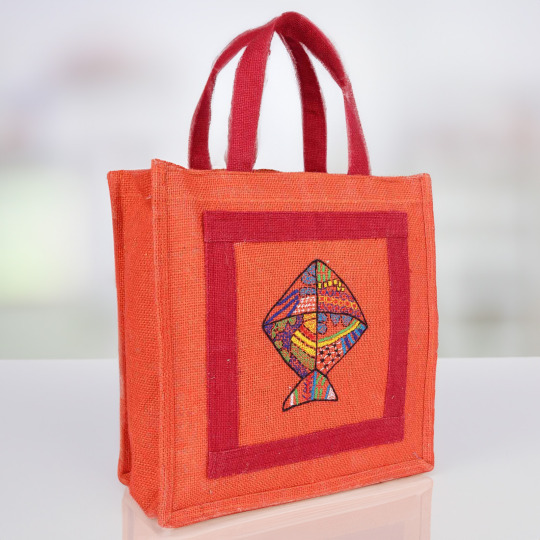
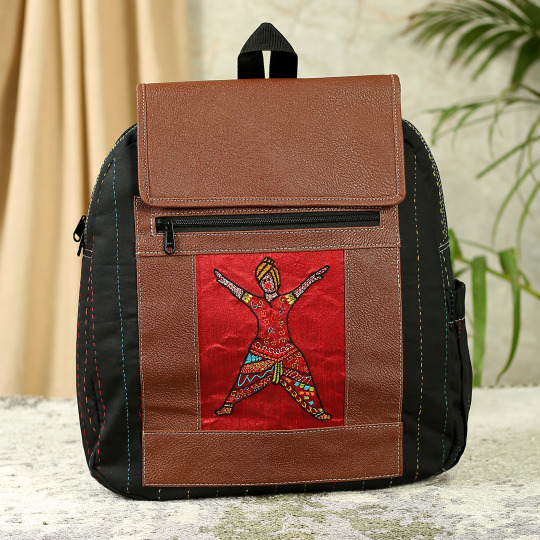
In the hands of our artisans like Kiran, Seema, and Purbi Mahato, the essence of traditional craftsmanship transforms into products that tell stories. From intricate block printing to exquisite needlework, their skilled hands bring to life a range of products – bags, wall decor, furnishings, and diverse gifts. Each design is a celebration of their unique talent, a talent that is now known and appreciated globally.
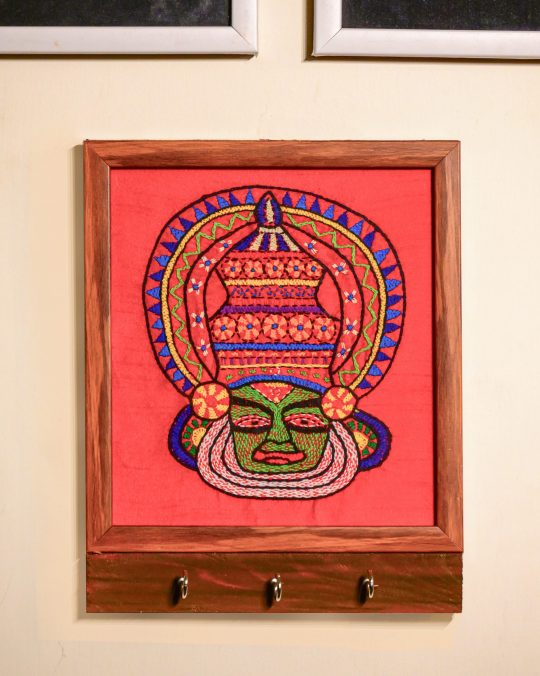
At Indha, we thrive on the response of our cherished buyers. Your appreciation fuels our passion to do more, to create more, and to contribute more. We understand that quality is not just a standard; it’s a commitment to the artisans who pour their hearts into every creation.
So, as the winter festivals unfold, and the nation revels in the harvest spirit, remember that behind each Indha creation is a story – a story of tradition, resilience, and the untold joy of artistic expression. Embrace the warmth, celebrate the creativity, and join us in harvesting joy this festive season.
LOHRI SPECIAL OFFER | 40% OFF | USE CODE: FEST
Website: Visit our official website at https://indha.in/ for an immersive online shopping experience.
Physical Store: Explore our curated collection in person at the Indha Shop, located at: 016 Sushant Tower, Sector 56, Gurugram, Haryana.
We look forward to welcoming you!
#HarvestingJoy#WinterFestivals#IndhaArtisans#RuralCraftsmanship#HandmadeCelebrations#QualityCrafting#ArtisanStories#CreativeExpressions#FestiveWarmth#EmpoweringCommunities#CraftingTradition#LohriGreetings#MakarSankrantiCheer#PongalCelebrations#HandmadeGifts#ArtisanPride#CelebratingTalent#CraftedWithLove#FestiveSpirit#IndhaCrafts#UniqueDesigns#SustainableIncome#ArtisticExpression#HandmadeWithPassion#WinterHarvestCrafts
0 notes
Text
Unveiling the Rich Cultural Heritage of Karnataka
Karnataka, south karnataka tour packages , is widely known for being rich in culture. Karnataka has seen multiple dynasties over the millennia with deep impact on the art, culture and traditions. This article examines the cultural heritage of Karnataka, tracing its origins, architecture, artforms, celebratory traditions, and the indelible spirit that defines the state.

Historical Significance
The cultural traditions of Karnataka go way back to the paleolithic period when the first traces of human civilization were found. The region has over the centuries been home to varied dynasties and empires like the Chalukyas, Hoysalas, Rashtrakutas, and the powerful Vijayanagara Empire. These dynasties helped weave Karnataka’s rich cultural fabric, leaving behind permanent marks in the shape of architecture, sculpture, and literature.
The architecture of Karnataka
Undeniably, one of the most remarkable elements of culture in Karnataka is its architectural wonders. The old city boasts amazing ancient temples, architectural marvels that still exist. The elaborate, ornate workmanship on the temples constructed in Karnataka by the Hoyalsalas and Chalukyas shows the skill of these architects.
Hoysala temples with their minutely carved sculptures and intricate carvings are renowned for the distinctive star-shaped platforms, intricately designed ceilings and exquisite carvings that portray mythological stories. However, the Chalukya temples were elaborately built in the Dravidian style, and featured enormous vimanas and sculpted decorations.
The most notable temple from Karnataka is undoubtedly the Chennakesava temple at Belur, an outstanding work of Hoysala architecture. The skill of the Hoysala craftsmen is evident in the beautiful carvings on the temples, featuring gods, goddesses and mythological scenes.
Art Forms
Art forms have flourished in Karnataka for years. Ancient dances like Bharatanatyam, Kuchipudi and Kathak have many roots in the country’s heritage. Yaksha Gana is a unique art form that combines dance, music and storytelling to tell Indian mythology. One of the oldest ancient musical traditions in India – Karnataka music – is found in Karnataka. Legendary composers like Purandardas, Kanakdas and Tyagaraja also made important contributions to this genre.
Literature and Language
The literature in Kannada, the state’s official language, is very developed. Composing epic poetry was pioneered by pampa, ranna, and ponna who are the “three gems of Kannada literature”. This marked the beginning of Kannada literature and their works enjoy a lot of veneration even up to date.
The Writings of Saint Purandara Dasa, a prominent poet and saint, have had a profound impact on the Bhakti movement in Karnataka. His compositions, known as Dasa Sahitya, are spiritual and devotional in nature, emphasizing the worship of Lord Vishnu.
Festivals
Karnataka's cultural heritage is alive and vibrant through its various festivals. Ugadi, the Kannada New Year, is celebrated with great enthusiasm. The Mysuru Dasara, a ten-day celebration, is a grand spectacle featuring a procession of caparisoned elephants, dance performances, and illuminated palaces. The Hampi Utsav, set in the backdrop of the stunning ruins of Hampi, showcases music, dance, and drama, attracting art and history enthusiasts from around the world.
The state's rich religious diversity also contributes to a myriad of festivals celebrated with zeal. Deepavali, Navaratri, Makar Sankranti, and Ganesh Chaturthi are just a few of the festivals that bring communities together to rejoice in their traditions.
The Enduring Spirit
The cultural heritage of Karnataka is not only ancient monuments but also a vibrant and rich resource. It is a collective consensus that reflects human values, traditions and aspirations. The country continues to maintain and preserve its cultural heritage through government policies, education systems and cultural institutions. Established in 2011, Karnataka Folklore University is dedicated to the study and preservation of the rich folklore and traditional knowledge of Karnataka. Museums like the Government Museum in Bangalore and the Salarjanga Museum in Hyderabad have treasures, sculptures and manuscripts that give us a glimpse of the country’s cultural history
Additionally, local artists and sculptors work diligently to keep ancient art forms alive. Continued preservation of ancient music and dance along with nurturing of young talent ensures that the artistic heritage of Karnataka remains vibrant and relevant in modern times.

Conclusion
Karnataka's cultural legacy embodies the essence of history, art, architecture, and tradition, standing the test of time. It's a colorful mosaic displaying the impact and input of different ruling families and societies who once inhabited the area. The state's cultural assortment fills its locals with a sense of dignity, engaging the global audience with its appeal and relevance. Karnataka’s cultural identity impressively showcases the unbroken courage of its populace and the eternal allure of its artistic and structural triumphs.
0 notes
Text
What Do We Do During Vijayadashami? And in Which States of India is Dussehra Most Popular?

Navratri and Dussehra (Vijayadashami) are important festivals of Hindu religion, which are celebrated on the Dashami date of Shukla Paksha of Ashwin month. On this day, Lord Rama killed Ravana and Goddess Durga defeated Mahishasura after a war of nine nights and ten days. Therefore this festival is also known as 'Vijayadashami'.
On this day, people do Shastra Puja and start new works. On this day, fairs are organized at various places, in which Ramlila is performed and Ravana Dahan is performed.
Dussehra Date in 2023, Starting at 5.44 pm on 23rd October and will continue till 3.14 pm on 24th October. According to Udaya Tithi, Dussehra will be celebrated on 24th October.
Dussehra Importance and Way of Celebration
In India, the festival of Vijayadashami is celebrated with great joy and pomp. On this day people organize various types of processions, some important tasks which are performed on the day of Vijayadashami are -
Ramlila: On the day of Dussehra, Ramlila is organized in different parts of India, in which the story of Lord Ram is presented in theatrical form, people enjoy it and take inspiration from the story.
Dussehra Fair: Dussehra fair is an important part of Indian culture which is celebrated with great enthusiasm by the people. On the occasion of the fair, people enjoy shopping and delicious food.
Ravana Dahan: On the day of Vijayadashami, Ravana Dahan has special significance, on this day people burn the effigies of Ravana, Kumbhakarna and Meghnath and learn the victory of good over evil.
Social Interaction: On the day of Vijayadashami, people interact with their friends, family and relatives and increase happiness.
Charity: Charity has special importance on the day of Vijayadashami, on this day people donate to the poor and needy and earn virtue.
Weapon Worship: On this day, people start new work, worship weapons and tools. In ancient times, kings used to pray for victory and set out for war on this day.
Maa Durga Idol Immersion: On the day of Vijayadashami, people immerse the Durga Maa Idol after worshiping it for nine days, and seek blessings from the Mother.

Some States of India Where Dussehra is Very Popular
India is a cultural country where every festival and celebration is celebrated with great pomp like Holi, Diwali, Rakshabandhan, Makar Sankranti etc.
Dussehra is also one of them, although the festival of Vijayadashami is celebrated with great pomp all over India, but there are some states where Dussehra is celebrated with special pomp, some of these major states are as follows:
Kullu, Himachal Pradesh: Dussehra here is very famous across the country for its grandeur and interesting way of celebrating the festival, Dussehra decorations are done with flowers and lights in Dhalpur grounds of Kullu valley, people carry Ram Darbar Murti on their heads to Dhalpur grounds. where they worship Lord Raghunath, here Vijayadashami festival lasts for seven days.

Mysore, Karnataka: Which is celebrated with enthusiasm and pomp as Vijayadashami on the last day after nine days of Navratri. It is also known as Jambu Savari. Dussehra is the day when Goddess Durga defeated Mahishasura and Lord Rama defeated Ravana. During this, the famous Mysore Palace is decorated with countless lights and special darbars are held for the city's royals, a procession of elephants moves around the city to reveal the city's cultural heritage and pride.
Bastar, Chhattisgarh: Here, instead of considering Dussehra as a form of victory of Rama over Ravana, people consider it as a festival dedicated to the worship of Mother Danteshwari. Danteshwari Mata is the main goddess of the residents of Bastar region, who is also a form of Durga. Here Dussehra is celebrated from the new moon of Shravan month to Shukla Trayodashi of Ashwin month. During these days, many events take place such as Paat Jatra, Kachan Gaadi, and Nisha Jatra etc.
Kolkata, West Bengal: Here Dussehra is celebrated as Durga Puja, where Goddess Durga is worshiped in lavishly decorated pandals. Famous artists of the country are called and the Durga Maa Statue is prepared. Along with this, many idols of other goddesses are also made, here Vijayadashami is marked as the last day of Durga Puja when the Durga Maa Murti is immersed.

Kulasekarapattinam, Tamil Nadu: A temple named Mutharamman is situated in this village in which the goddess is decorated with jewels, on this day devotees come to see the remarkable attraction of this temple. The Dussehra festival here lasts for 10 days, a distinctive aspect of this festival is the dance, in which people dance in unique costumes to the lively tunes of Thar Thappattam.
Conclusion
In this article about Dussehra, we learn that Vijayadashami is an important festival. This festival includes worship of Goddess Durga, Ramlila, Ravana Dahan, and other activities. In these celebrations of Vijayadashami, people celebrate with their family and society members, and take steps towards goodness.
Through this article we saw that Dussehra is celebrated in different ways in different states of India, and it adds to the diversity and culture of the country. We learn many lessons from this festival about how good triumphs over evil and how we can build a society that is strong, determined, and just.
#Durga Maa Idol#Ram Darbar Murti#Durga Maa Statue#Durga Maa Murti#chokhi dhani kalagram#handicraft store#home décor items
0 notes
Text

Celebrating Makar Sankranti 2024: Kites, Colors, and Cheer | Sabezy
Celebrate the joyous celebration of Makar Sankranti 2024, which is filled with kites and colors! This Makar Sankranti uplifts your festive vibes by exploring fresh ideas for home decor.
0 notes
Text
Telugu Calendar 2023 – January 2023 to December 2023
In this meticulously researched article, we will delve into the history of Telugu festivals, exploring their origins, religious importance, and the unique ways in which they are celebrated, fostering a strong sense of unity and community among Telugu-speaking people.
Telugu festivals, steeped in rich history and cultural significance, hold a special place in the hearts of the people of Andhra Pradesh and Telangana, the two southern states of India. With a diverse range of festivals observed throughout the year, these celebrations provide a glimpse into the region's vibrant traditions, age-old customs, and deep-rooted spirituality.
Here you can checkout Telugu Festival dates .
Ugadi - The Telugu New Year:
Ugadi, which translates to "the beginning of a new age," marks the Telugu New Year's Day. It falls on the first day of the Chaitra month, typically in March or April. The festival holds immense astrological significance as it heralds a new zodiac cycle. People clean their homes, decorate them with vibrant rangoli designs, and prepare a special dish called "Ugadi Pachadi," a concoction that symbolizes the essence of life with its blend of sweet, sour, bitter, and tangy flavors.

Makar Sankranti - The Harvest Festival:
Makar Sankranti, celebrated in mid-January, is a joyous harvest festival that marks the transition of the sun into the zodiac sign of Capricorn. The festival is synonymous with flying colorful kites, especially in the rural areas of Andhra Pradesh and Telangana. People exchange traditional sweets like "til-gud" (sesame and jaggery sweets) as a symbol of goodwill and harmony.

Vinayaka Chaturthi - Worshiping the Elephant God:
Vinayaka Chaturthi, also known as Ganesh Chaturthi, is dedicated to Lord Ganesha, the elephant-headed deity. This festival, celebrated in August or September, involves elaborate processions and the installation of clay idols of Lord Ganesha in homes and public pandals. The grand celebrations culminate with the immersion of the idols in water bodies, symbolizing the deity's return to his heavenly abode.
Dussehra - Triumph of Good over Evil:
Dussehra, celebrated on the tenth day of the Hindu month of Ashwin, commemorates the victory of Lord Rama over the demon king Ravana. The festival is celebrated with great enthusiasm, and in some regions, grand processions are held with large effigies of Ravana, which are eventually set ablaze. Dussehra also marks the beginning of Navratri, a nine-day festival dedicated to the worship of the goddess Durga.
Diwali - Festival of Lights:
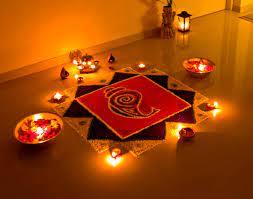
Diwali, the "Festival of Lights," is one of the most widely celebrated festivals in India, including Andhra Pradesh and Telangana. It signifies the triumph of light over darkness and good over evil. The streets are adorned with decorative lights, and homes are illuminated with earthen lamps known as "diyas." Families exchange sweets and gifts, and fireworks light up the night sky, creating a magical ambiance of joy and unity.
Bathukamma - Celebrating Womanhood and Nature:
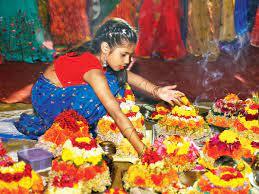
Bathukamma, a unique and colorful festival, is celebrated by the women of Telangana. It is observed during the latter half of September or early October. Women create elaborate flower arrangements in the shape of a conical stack to worship the goddess Bathukamma, a symbol of womanhood and the life-giving nature of the earth. The festival is accompanied by folk songs, dances, and community feasts.
Bonalu - Paying Homage to the Mother Goddess:
Bonalu, celebrated in the month of Ashada (July or August), is an ancient folk festival honoring the mother goddess Mahakali. The festival involves offering traditional rice dishes and prayers to seek the goddess's blessings and protection from diseases and calamities. Bonalu is celebrated with great fervor, especially in the city of Hyderabad.
As the festive season comes we eat delicious food which were very oily. So we have to maintain healthy lifestyle by doing exercise at Vasa Fitness.
Conclusion:
The history of Telugu festivals showcases a cultural tapestry interwoven with age-old traditions, religious devotion, and a strong sense of community spirit. These festivals bring people together, fostering unity, harmony, and a deep connection with their cultural roots.
The vibrant celebrations, rituals, and customs associated with each festival reflect the essence of Telugu culture and the rich heritage of Andhra Pradesh and Telangana. As these cherished traditions continue to be passed down through generations, the spirit of these festivals remains alive, connecting Telugu-speaking people worldwide in a tapestry of joy and celebration.
0 notes
Text
Festive Dressing - Style of Attire - A brief discussion
Festive dressing is an art and you need to accompany it with sustainable clothing from top designers such as KK(https://karunakhaitan.in). However, you need to know the tricks to make it more beautiful and classy. Let's discuss few tips below.
Festive dressing is a style of attire that is suitable for celebrating various occasions, such as holidays, weddings, or cultural festivals. It is a fun and colorful spin on semi-formal wear that allows you to express your personal style and creativity. Festive dressing can vary depending on the season, the theme, and the location of the event, but here are some general tips and examples to inspire you:
Choose bright colors and prints that reflect the mood and spirit of the celebration. For example, you can wear black on Makar Sankranti to stay warm on a cold winter day, or you can wear red and green on Christmas to match the decorations.
Experiment with different fabrics and textures that add interest and flair to your outfit. For example, you can wear velvet, silk, lace, or sequins to create a festive look.
You can wear a statement necklace, a pair of earrings, or a clutch that matches your dress color or print.
Dress for comfort and confidence. Festive dressing is not about following strict rules or trends, but about wearing what makes you feel good and happy.
Some examples of festive outfits are:
A cocktail dress in a vibrant color or print with heels and a clutch.
A sari with an off-shoulder blouse or a corset for a modern twist.
A jumpsuit or a romper with a jacket or a cardigan and flats or boots.
Festive dressing is a fun way to celebrate life and enjoy yourself. You can mix and match different pieces and accessories to create your own unique look. Remember to have fun and be yourself!
Should you think of buying sustainable dresses for your loved ones, visit https://karunakhaitan.in/collections/dresses
0 notes
Text
COME WITH ME TO KOLKATA
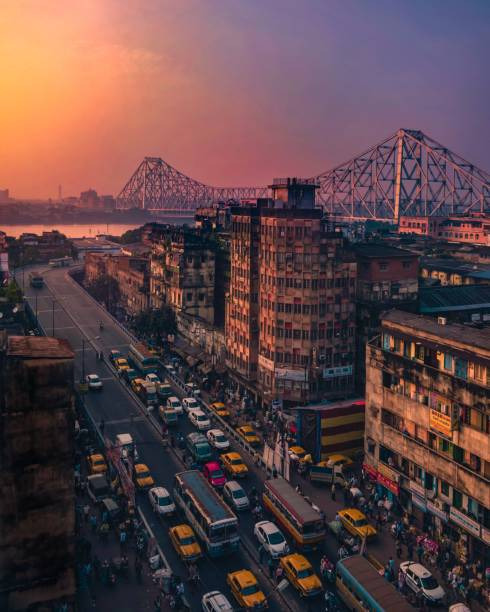
KOLKATA
Known as the ‘City of Joy’, Kolkata holds an important place in the economy, politics and culture of India. The capital of West Bengal, Kolkata is one of the four metropolitan cities in India and has retained its quintessential charm despite modernization.
“Calcutta’s the only city I know where you are actively encouraged to stop strangers at random for a quick chat.”
It’s one of a kind city and it cannot be compared with other cities of the world. Kolkata was the first city in India to offer underground metro services. The city offers variety of modes of transport from hand puller rickshaw to ancient trams, from metro train to boats.
Victoria Memorial, Howrah bridge, Botanical Garden, Science City etc. are some of the must visit places of Kolkata. It is a great place to shop; people from all over India visit Park Street, Burra Bazar, New Market, Maidanetc for shopping.
Kolkata is the city of festival. Every day is a celebration in Kolkata. The best time to visit the city is during Durga Puja which generally takes place between September and October. During this time of the year the entire city is light up with millions of lights. It is decorated like a princess to welcome Maa Durga.
Many great personalities of India are born and brought up in Kolkata. It is a hub of culture. It is a place where talents are given due respect.
Now I tell you about my journey of KOLKATA. I went to Kolkata in December 16 2022 by train with my family. I took Sealdah Rajdhani express at 5:00 pm from Delhi. I reached Sealdah (kolkata) next day 17th december at 2:00 pm. From there we took taxi and reached the guest house. we were tired and took some rest. At 6:00 pm on 17th Dec, we went to kali ghat for darshan. Kalighat is regarded as one of the 51 Shakti Peethas of India, where the various parts of Sati's body are said to have fallen, in the course of Shiva's Rudra Tandava. Kalighat represents the site where the toes of the right foot of Dakshayani or Sati fell. On 18th december , we went to GANGA SAGAR ( village on sagar island, west bengal) The island of Gangasagar is one of the most famous Hindu pilgrimage centres in India. Every year on Makar Sankranti (mid-January), pilgrims from all over India, gather at Gangasagar for a holy dip at the confluence of the River Ganga and the Bay of Bengal. our whole day spent in gangasagar. on 19th Dec, We went to swami vivekananda ashram and belur math. we enjoyed a lot and I get to know many things about kolkata their tradition, culture, historical places, food etc. we had train on 20th December from sealdah. That's all about my journey i tried all the famous food of Kolkata puchke, rasgulla, Mishti doi etc. Had a wonderful experience.
kali ghat

Ganga Sagar
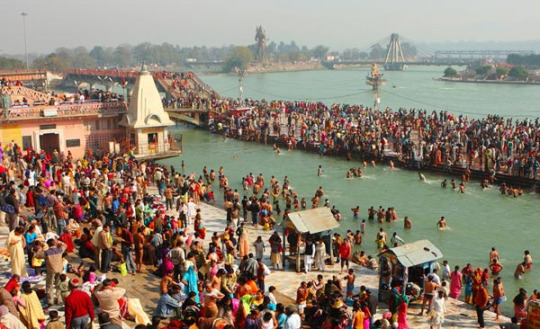
Vivekananda ashram and belur math
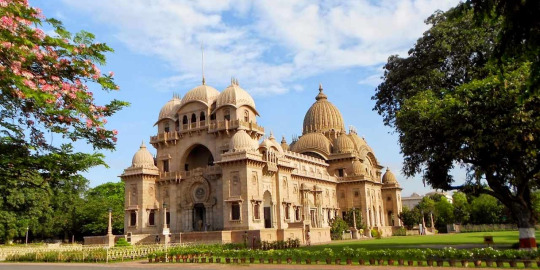
0 notes